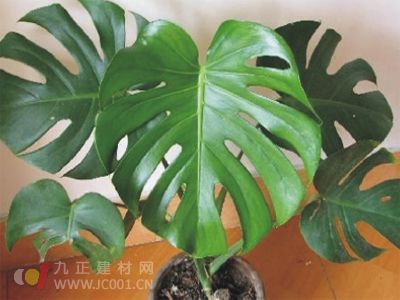Monstera is a shade-tolerant plant. Avoid exposure to strong light. Generally, after leaving the house in early May, it is placed under the grape shed or near the riverside tree. Before 9 am and after 6 pm, you should see scattered sunlight. The leaves of the monstera have obvious phototaxis. When placed, the leaves must face the sunlight to avoid distortion of the whole plant. At the end of October, the potted plants will be moved indoors, placed at noon and exposed to strong light, and received enough light every day. Indoor wintering can not be less than 10, c below. The leaves are often kept clean for photosynthesis and aesthetics.
The monstera is moist and moist. The potted soil will rot the roots, causing the plants to stop growing, the leaves drooping, losing luster, and the leaves are uneven. Watering should be based on the principle of being wet and not dry, but always keep it moist, but not water. Watering once every two or three days in spring and autumn. Water is given every day from 2 to 4 pm in the summer. The amount of watering depends on the dryness and wetness of the soil, and it is generally preferred to pour the foot. Watering should be reduced in winter, and watering should be done every 7 days or so. The monstera is air-dried. During the growth period, the ground and the foliage are sprayed with water several times a day to increase the air humidity around the plant. In the summer, avoid spraying the overheated river at noon in the hot sun to avoid burning the leaves.

The demand for fertilizer is higher than that of common flowers. In addition to applying the pelvic floor fertilizer (one-third of the soil), from May to October, during the growth period of the monstera, it is applied once every 10 days. Sauce, horseshoe, bean cake and surimi are mixed with thin liquid fertilizer. To be thin and dilute, combined with watering, apply 5% thin liquid fertilizer every two or three days.
The leaves of the monstera are large. When the plant is first planted, it is necessary to set up a frame. After the shape is set, it is withdrawn and kept at a certain distance from the surrounding objects, so that the large leaves are unimpeded. During indoor maintenance and viewing, maintain ventilation to prevent leaf scale insects.
Buttweld pipe fittings comprises of long radius elbow, Concentric Reducer, eccentric reducers and Tees.They are an important part of industrial piping system to change direction, branch off or to mechanically join equipment to the system. Buttweld fittings are sold in nominal pipe sizes with specified pipe schedule. BW fitting`s dimensions and tolerances are defined as per ASME standard B16.9.
Butt Weld fittings are also called Welded Pipe fittings. These welded fittings in carbon steel and stainless steel offer many advantages compared to threaded and socketweld fittings. The later are only available up to 4-inch nominal size whereas butt weld fittings are available in sizes from ½" to 102".
In order to satisfy pipeline components require , we could make pipeline Combined Components , fittings could be weld and installed together as your kindly drawings .
We have years experience of manufacturing special components , should any inquiry , please don't hesitate to contact , one more good choice for you .
Combined Fittings, Combined Components, Fitting Components, Pipline Components, Special Pipe Fittings, Combined Pipe Fitting
Shijiazhuang Bang dong Pipeline Technology Co,Ltd. , http://www.bd-pipefitting.com